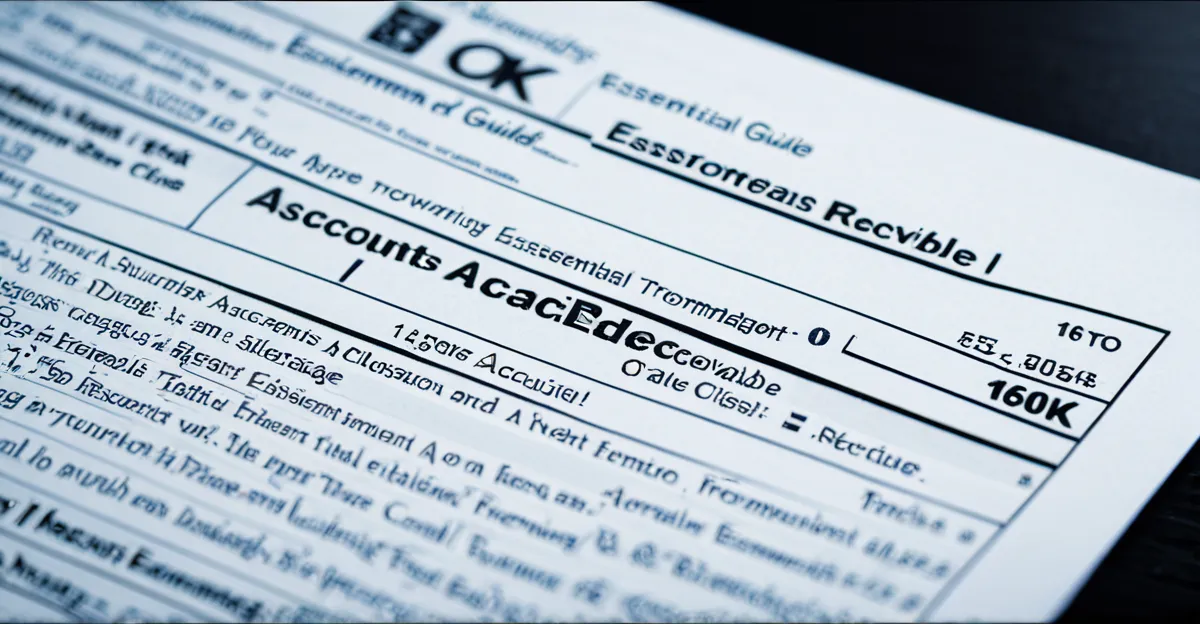Understanding accounts receivable is key to managing a company’s cash flow and customer relationships effectively. This guide breaks down essential functions—from invoicing to collections—and highlights specialized roles that keep payments on track. Clear insights into these processes empower both beginners and professionals to optimise financial operations and support business growth.
Accounts receivable fundamentals, significance, and primary business functions
Accounts receivable (AR) are amounts owed to a business by customers who have received goods or services on credit—but haven’t yet paid. They are recorded as current assets on the balance sheet because payment is expected within a year. You can view more details on this page: Click here for more info. Their classification as current assets highlights their vital role in supporting short-term liquidity and cash flow.
A lire aussi : How to utilize predictive analytics for forecasting UK property market trends?
AR requires careful management, as it directly impacts a business’s financial health, cash flow, and working capital. An efficient AR process supports day-to-day liquidity, ensuring companies can meet obligations and invest in growth. Poorly managed receivables can tie up cash, increasing the risk of bad debts or operational disruptions.
Three primary functions underpin accounts receivable work:
A découvrir également : Top strategies for mastering accounts receivable management
- Invoicing: Billing customers accurately and promptly ensures timely recognition of revenue and initiates the collection process.
- Credit extension: Granting customers credit involves evaluating their reliability and setting payment terms like Net 30 or Net 45 days.
- Collections: Proactively following up on outstanding invoices helps maintain cash flow and reduces the likelihood of uncollectible accounts.
Businesses often analyze AR through metrics such as the accounts receivable turnover ratio and days sales outstanding (DSO) to gauge collection efficiency. Through active AR management—spanning credit, invoicing, and collections—a company sustains profitability, optimizes working capital, and protects its financial stability.
Major types of receivables and core accounting principles
Trade receivables, non-trade receivables, installment, and lease receivables
Trade receivables arise when a business extends credit to customers for goods or services. These represent the most common types of receivables, are recorded as current assets, and directly impact liquidity. In contrast, non-trade receivables encompass advances to employees, tax refunds due, or insurance claims—amounts not tied directly to everyday sales. Installment receivables emerge from sales where customers pay over time, while lease receivables represent amounts due from property or equipment rentals. Distinguishing trade receivables vs non-trade receivables helps clarify reporting requirements.
Initial recognition, revenue recognition, and matching principle
When recognizing accounts receivable, businesses record a debit to accounts receivable and a credit to sales revenue. Revenue recognition aligns with delivery of goods or completion of services, following accrual accounting. The matching principle ensures that revenues and related expenses are recognized in the same period, forming a cornerstone of receivables accounting principles.
Core accounting entries: billing, receipt, and bad debt estimation
Proper journal entries for receivables begin with invoicing: debit accounts receivable, credit revenue. Upon payment, debit cash and credit accounts receivable. If collectability is uncertain, the allowance for doubtful accounts—a contra asset—is used for bad debt estimation. These steps ensure accuracy in reporting and support reliable analysis of financial health.
Accounts receivable management practices and key performance metrics
Invoicing processes, payment terms, and collections workflow
Managing receivables begins by establishing clear invoicing procedures and well-communicated payment terms. Invoices typically outline due dates and any discounts for early payments or fees for overdue balances. Efficient invoicing and receivable collections promote reduced payment delays and strengthen overall accounts receivable management. A streamlined workflow also means that disputes or deductions can be addressed quickly, minimizing disruptions to cash flow.
Accounts receivable aging analysis, DSO, and turnover ratio measurement
Businesses use accounts receivable aging and analysis to categorize outstanding invoices according to how long they’ve been overdue. This process uncovers collection risks and focuses resources on older receivables. Calculation of days sales outstanding (DSO) and the accounts receivable turnover ratio provides instant insight into collection efficiency. Lower DSO and higher turnover ratios reflect healthier, faster-moving receivables, allowing companies to free up working capital.
Best practice solutions for monitoring, automation, and metrics tracking
Adopting reliable receivables tracking and monitoring systems—such as dashboards and automated reminders—supports real-time visibility over outstanding balances. Champions in receivables dashboard best practices track metrics like collection trends, dispute resolutions, and overdue accounts. Automation reduces manual errors, aids compliance, and ensures a sustainable approach to managing receivables. Regular monitoring empowers teams to spot patterns and take proactive action before issues escalate.
Receivables-related challenges, risk management, and financing solutions
Managing cash flow risk, allowances, and bad debt estimation
The impact of accounts receivable on cash flow is immediate—slow collection drains available funds for operations. Businesses employ allowances and estimate bad debt expense accounting to reflect expected losses. Using historical data and risk analysis, companies forecast uncollectibles in doubtful accounts, directly affecting net accounts receivable and asset valuation. Accurate bad debt estimation protects financial statements, ensuring that receivables presented are realistic and that working capital is not overstated.
Financing options: collateralized loans, factoring, discounting, securitization
Multiple accounts receivable financing options address liquidity shortfalls. With collateralized loans, receivables secure funds. Factoring accounts receivable explained: businesses sell invoices at a discount to a third-party (factor), immediately boosting cash but reducing total revenue. Securitization pools receivables for investors, while discounting grants advances against invoices. Understanding the pros and cons of receivables factoring is key: quick access to cash and reduced collection risk, versus fees and potential customer notification implications.
Dispute resolution, overdue recovery, and outsourcing collections
Handling accounts receivable disputes is vital to prevent delays in payment and maintain customer trust. Clear documentation, open communication, and prompt investigation streamline resolution processes. For managing overdue receivables, timely reminders and structured escalation help recover funds. Sometimes, outsourcing collections becomes necessary, especially when internal resources are stretched or legal expertise is required. Each step supports stronger cash flow and limits bad debt exposure.
Careers, roles, and technology in accounts receivable management
Key AR team roles: Billing Analyst, Collections Analyst, AR Manager, and pathways for advancement
Accounts receivable roles and career paths span a well-defined structure within an organization. Typical accounts receivable job descriptions detail positions such as Billing Analyst—tasked with prompt and accurate invoicing—Collections Analyst—focusing on overdue receivables and dispute resolution—and Accounts Receivable Manager, who supervises team workflow and process optimisation. These established accounts receivable roles and career paths support strong internal controls and the timely collection of outstanding receivables.
Career progression in receivables is common. Entry-level staff may begin as billing or cash applications analysts before moving into management, or specialise further within the accounts receivable department, reflecting an array of accounts receivable job descriptions across organizations.
Essential qualifications, certifications (ACCA), and skill sets
Required skills for receivables management include attention to detail, strong communication, analytical ability, and proficiency in receivables systems. Many prefer candidates with financial certifications such as the ACCA Foundations qualification, which builds capabilities in receivables accounting principles and practical knowledge aligned with the responsibilities found in most accounts receivable job descriptions.
Digital transformation: automation, software, and workflow integration in AR management
Automated accounts receivable systems and robust accounts receivable software solutions such as QuickBooks now underpin modern receivables management. Using QuickBooks and other tools for receivables streamlines invoicing, collections tracking, and ledger updates—making automated accounts receivable systems indispensable for efficient accounts receivable roles and career paths today.











